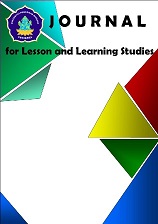Innovative Learning Approaches in Sports: Comparing Teaching at the Right Level and Classical Methods for Drive Stroke Mastery
DOI:
https://doi.org/10.23887/jlls.v7i3.87097Kata Kunci:
Drive Stroke Skills, Arm Power, Learning ApproachAbstrak
The lack of teaching approaches tailored to students' skill levels often hinders the development of sports abilities, including drive stroke proficiency in tennis. This study aims to analyze the differences in the effectiveness of the Teaching at the Right Level (TaRL) approach compared to classical methods in improving drive stroke skills. The research utilized an experimental method with a 2 x 2 factorial design. The sample consisted of 64 randomly selected students, and data collection employed the Forehand Groundstroke Tennis Test Accuracy by Jennifer Love Hewitt. Data analysis was performed using SPSS version 25.0, including prerequisite tests for normality and homogeneity (α = 0.05) and factorial analysis. The results revealed that the TaRL approach significantly influenced drive stroke skills compared to the classical approach (Sig = 0.00 < 0.05). However, no significant differences were found based on arm muscle power and gender (Sig = 0.667 > 0.05), nor were there interactions among teaching approach, arm muscle power, and gender on drive stroke skills (Sig = 0.490 > 0.05). This study concludes that the TaRL approach is more effective than the classical method in improving drive stroke skills. These findings underscore the importance of implementing teaching methods tailored to students' abilities to optimize sports learning outcomes.
Diterbitkan
Cara Mengutip
Terbitan
Bagian
Lisensi
Hak Cipta (c) 2024 Hanik Liskustyawati , Sri Santoso Sabarini, Rony Syaifullah, Waluyo, Agus Mukholid, Baskoro Nugroho Putro, Suratmin

Artikel ini berlisensiCreative Commons Attribution-ShareAlike 4.0 International License.
Authors who publish with the Journal for Lesson and Learning Studies agree to the following terms:
- Authors retain copyright and grant the journal the right of first publication with the work simultaneously licensed under a Creative Commons Attribution License (CC BY-SA 4.0) that allows others to share the work with an acknowledgment of the work's authorship and initial publication in this journal.
- Authors are able to enter into separate, additional contractual arrangements for the non-exclusive distribution of the journal's published version of the work (e.g., post it to an institutional repository or publish it in a book), with an acknowledgment of its initial publication in this journal.
- Authors are permitted and encouraged to post their work online (e.g., in institutional repositories or on their website) prior to and during the submission process, as it can lead to productive exchanges, as well as earlier and greater citation of published work. (See The Effect of Open Access)




